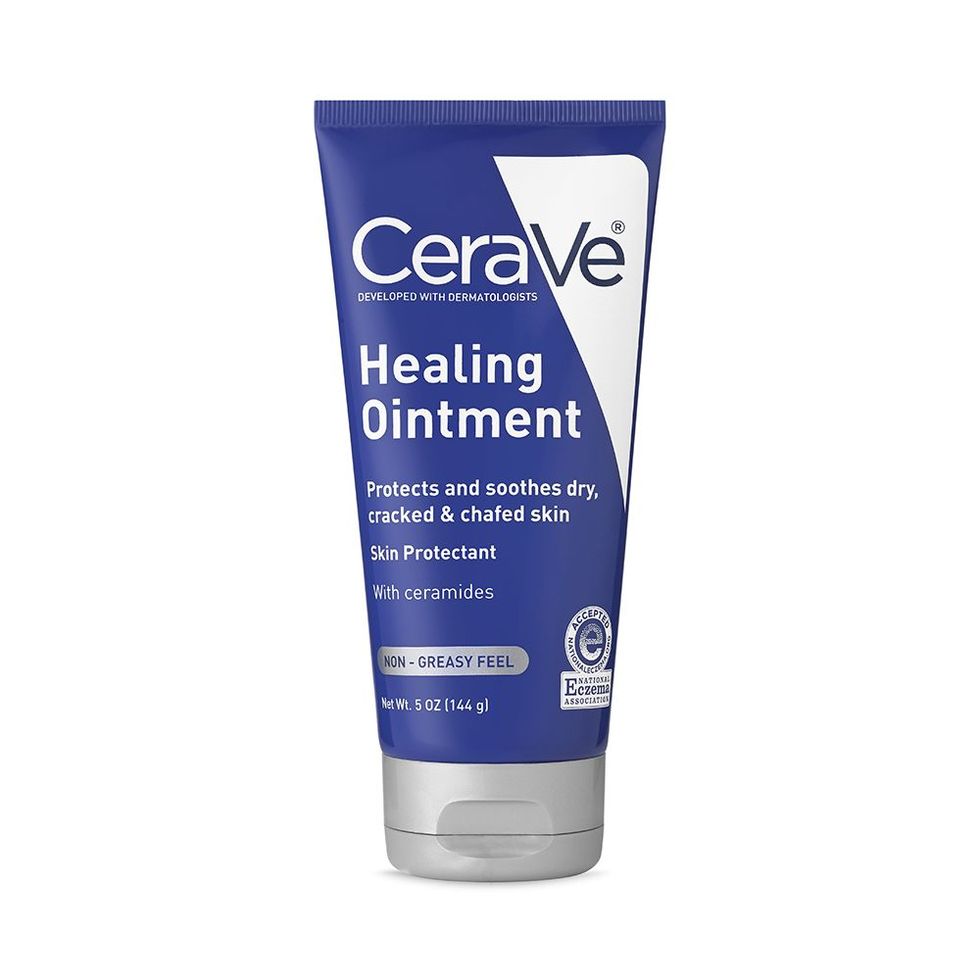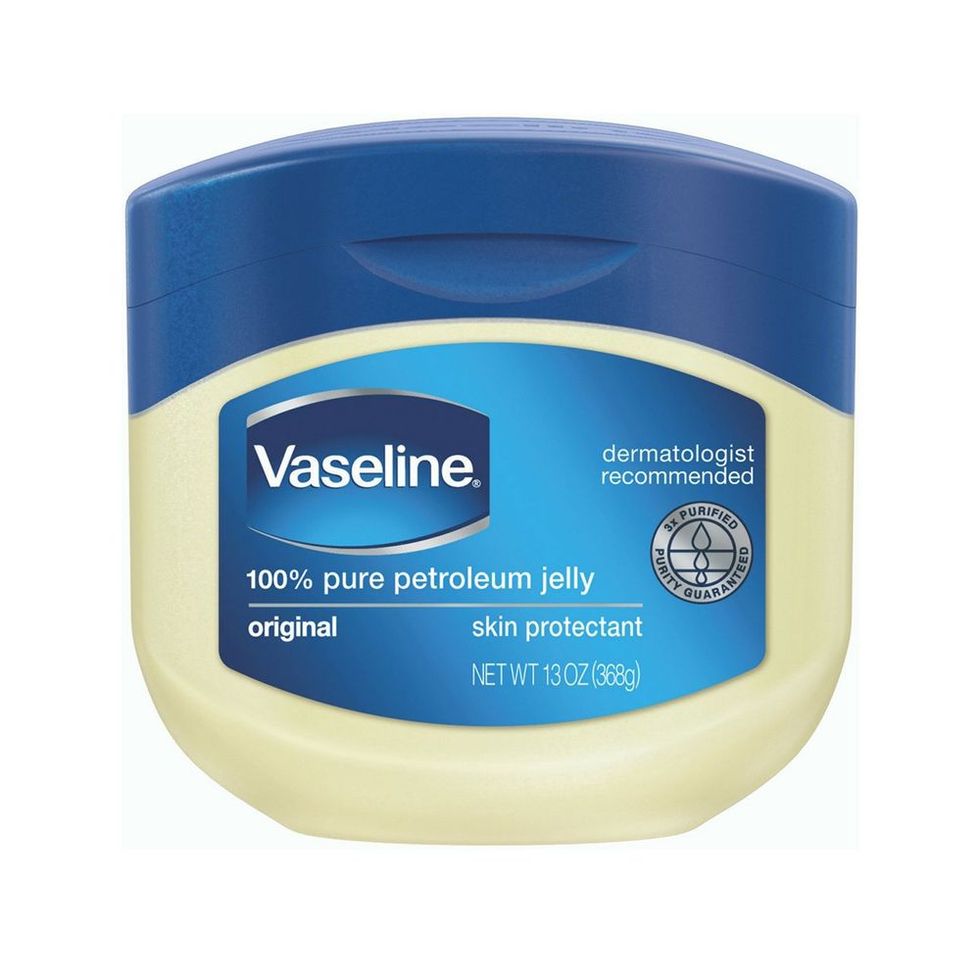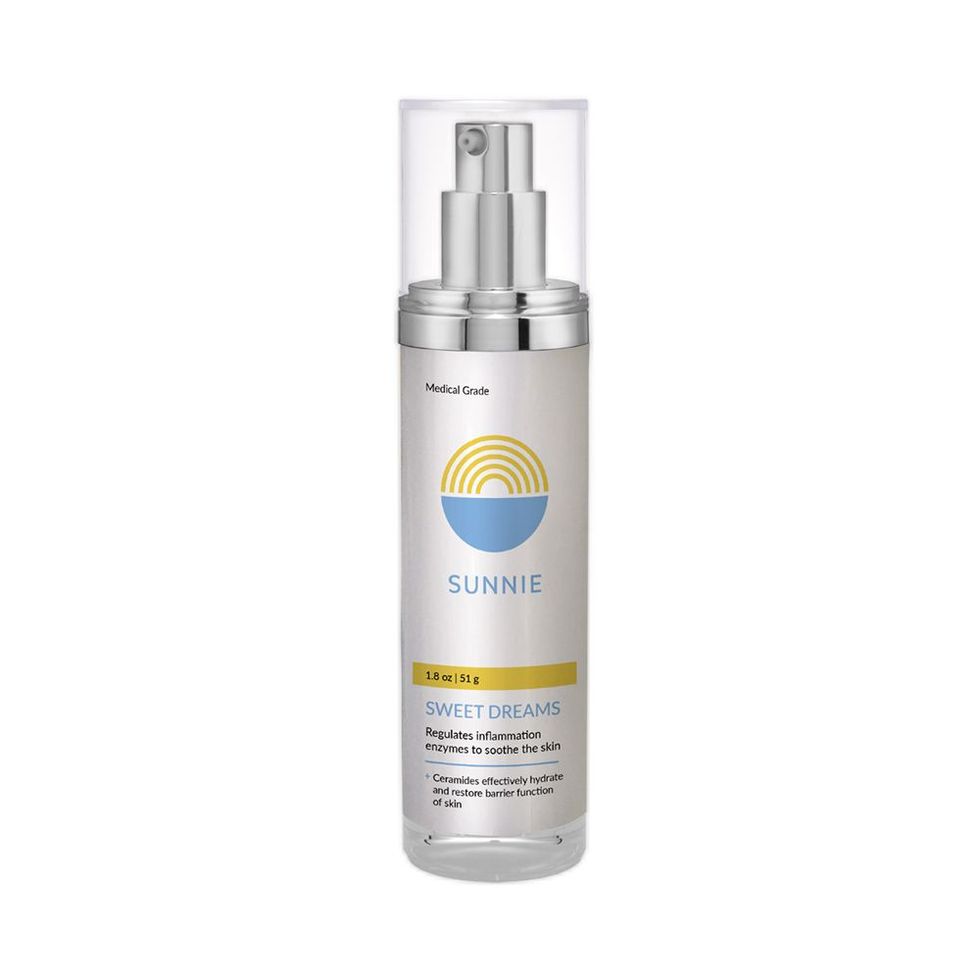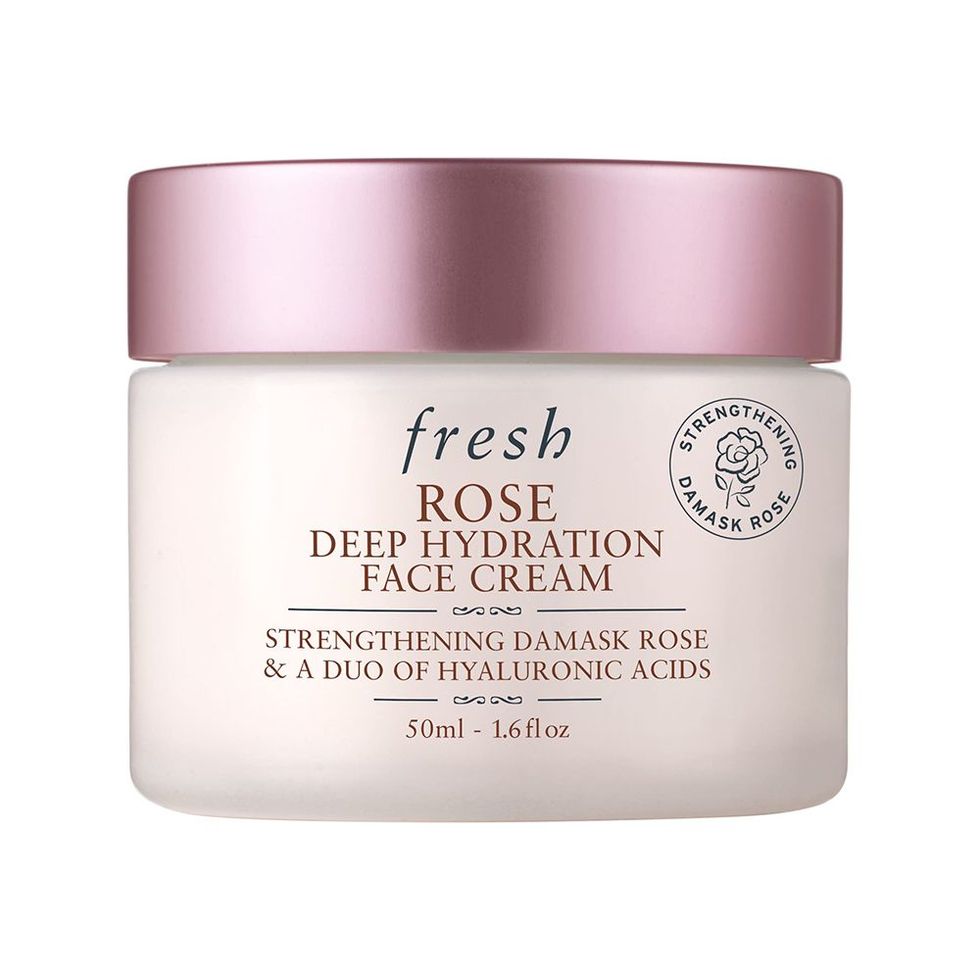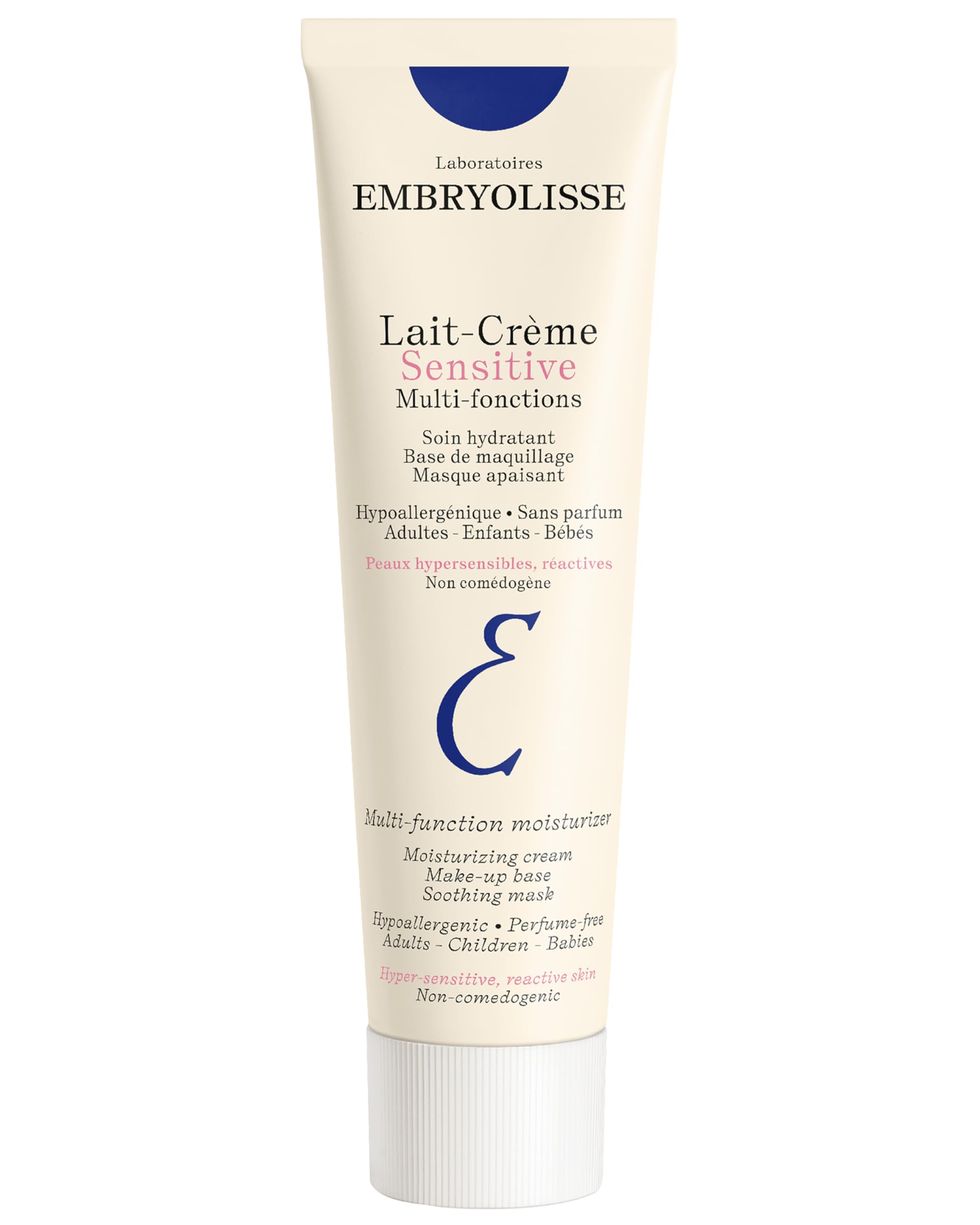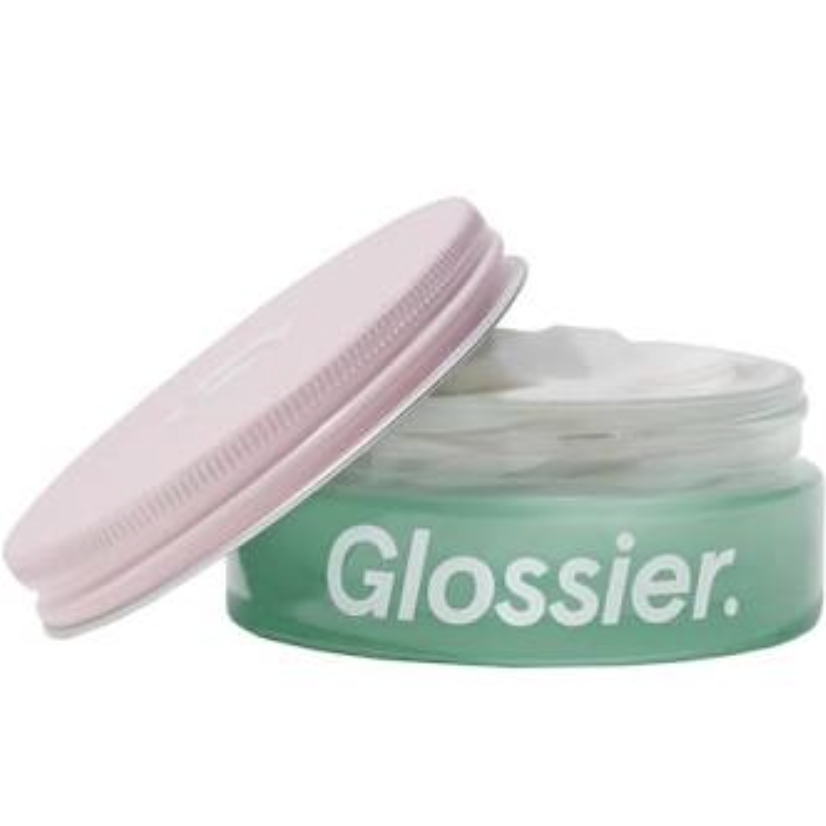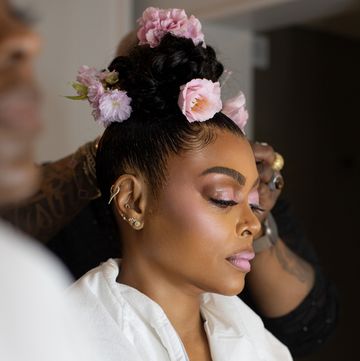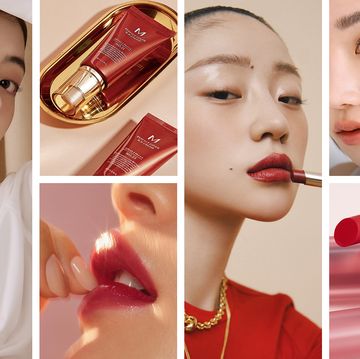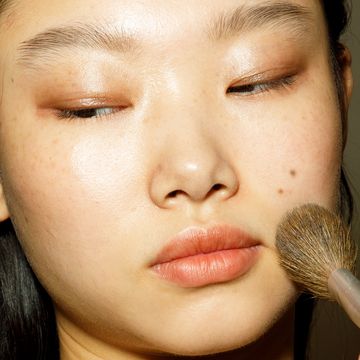If you’ve spent endless time scrolling through the depths of TikTok (don’t worry, we’ve all been there), chances are you’ve heard a thing or two about the viral skin care trend titled “slugging.” Despite its seemingly off-putting connotation, the process of slugging can actually work wonders for your skin. So, what is it exactly? Board-certified dermatologist Dr. Hadley King tells ELLE.com that slugging involves “applying an occlusive like petrolatum to the face before bedtime.”
If you tend to err on the side of caution when it comes to DIY skincare trends, perhaps due to too many experiments gone wrong, you have all the right to be apprehensive. Wouldn’t a heavy substance like petroleum jelly clog your pores? Is slugging a risky undertaking if you’re prone to breakouts? Should you avoid active ingredients while slugging? These are all valid questions—and we’re here to answer them.
Ahead, we created a detailed guide to slugging, with tips from several skin care professionals, so that you can reap the benefits of hydrated skin.
What is slugging?
You likely haven’t used petroleum jelly on your face since your childhood, but Dr. Alexis Parcells, MD, a board-certified plastic surgeon and founder of SUNNIE, explains that slugging is a simple technique “of slathering on a heavy-duty occlusive like petroleum jelly as the last step of a nighttime routine.” It gets messy, but slugging locks in moisture and the other products used in your nighttime routine. “The slimy film resembles a slug. Hence the name ‘slugging,’ she adds.
Carla Nelson and Wendy Jules of Brooklyn’s Fleur De Lis Beauty say the treatment is a great way to moisturize your skin overnight.“[Slugging] offers great hydration and water retention, leaving skin fresh in the morning. The goal is to maintain young, bouncy skin, and slugging definitely aids in that,” Nelson says.
How often should you do slugging?
Rule number one of skin care is always to be aware of your skin’s health and needs. “As far as frequency goes, it’s best to listen to your skin,” Nelson adds. If you have skin that tends to be dry, you may benefit from slugging daily. However, those with oily skin should consider slugging less or not at all, Dr. Parcells says, as slugging might make any active breakouts or oil-prone skin even worse.
Also, your slugging habits might change depending on the weather. During colder months, slugging can help to treat dryness and irritation. However, our skin naturally produces more oil when temperatures increase, so it might be best to limit slugging during this time.
What are the benefits of slugging?
Slugging’s benefits extend beyond waking up to baby-smooth skin. Of all the benefits, barrier repair is the most important.“Slugging is a very safe way to help restore the skin barrier and prevent surface water loss. Slugging can also help your serum or moisturizer penetrate the skin more effectively. It is inexpensive and effective, helps restore moisture, and leaves your skin feeling soft, well hydrated, and smooth,” Dr. Sheilagh Maguiness, MD, board-certified dermatologist and co-founder of Stryke Club says.
Can slugging clog pores?
In most slugging routines, you’re slathering on a thick ointment, which can be quite daunting for folks with oily skin. Dr. Maguiness says that most “petrolatum-based ointments are non-comedogenic. Slugging should not clog your pores.” What’s most important is the types of products being used in the routine.“The limitation here lies in what you apply to your skin before the occlusive petrolatum layer; if it’s something that is an oil-based serum or another product that is more comedogenic, that may end up clogging pores and creating blemishes,” she explains.
What skin types should avoid slugging?
Slugging is a skincare trend that many skin types can benefit from, “especially during the winter when dry skin is super common. In fact, even oily and acne-prone skin (if dry) can benefit from slugging,” Dr. Maguinuss says. However, if you’re prone to breakouts, you might want to sit this trend out. “Individuals with active acne breakouts or blackheads should probably avoid this technique and opt instead for treatment with ingredients aimed at fighting acne, such as salicylic acid, benzoyl peroxide, and topical retinoids,” she says.
What type of products should you avoid when slugging?
Dr. Parcells advises against using active ingredients, such as alpha-hydroxy acids (AHAs), beta hydroxy acids (BHAs), or retinoids when slugging at night. “When trapped, these [actives] can increase their strength beyond what was concentrated by a chemist, leading to unpredictable results on your skin,” she explains. Slugging is best paired with hydrating ingredients that contain humectants like honey or aloe vera. “Slugging itself isn’t hydrating, as it doesn’t infuse the skin with moisture. Rather, it keeps the moisturizing products you’ve applied from seeping out,” Dr. Parcells says.
How do you properly slug your skin?
First, you want to ensure you start with a clean face before applying products to the skin. “Slugging itself is not comedogenic (acne-causing), but if you have clogged pores or retained makeup, you could create an infection or outbreak by trapping these particles under the occlusive. Make sure your skin is SUPER clean before sealing it. Exfoliate,” Dr. Parcells says.
Next, you want to ensure the products you’re applying are formulated to provide moisture. Dr. Parcells adds that you should look for “glycerin, hyaluronic, or aloe-based products” to apply to your damp skin. The steps are simple:
- Cleanse
- Exfoliate
- Moisturize with humectant-based products
- Apply the occlusive
These steps should be done about 30 minutes before bed to allow the products to seep into the skin. Before coating your skin with an occlusive, it’s best to protect your pillowcase from the treatment. “Place a towel over your pillowcase, as things can get messy overnight. Consider keeping your hair back in a sleep hat or headband. You may also use cling or saran wrap to contain the petroleum after application,” Dr. Parcells suggests.
What are the best products to use for slugging?
Once you’ve nailed the process, try a moisture-boosting treatment using these products. Then, prepare for baby-soft skin by morning.
Meet the experts
Dr. Hadley King, a board-certified dermatologist who specializes in medical and cosmetic dermatology
Dr. Alexis Parcells, MD, a board-certified plastic surgeon and founder of SUNNIE
Carla Nelson and Wendy Jules, licensed estheticians and founders of Fleur De Lis Beauty
Dr. Sheilagh Maguiness, MD, board-certified dermatologist and co-founder of Stryke Club
Why trust ELLE Beauty?
As a leading publisher of fashion, lifestyle, and beauty content, ELLE.com is committed to highlighting the best products in various categories by personally testing the latest and most innovative products, interviewing countless experts, and vetting customer-loved items. For this piece, ELLE.com beauty commerce editor Nerisha Penrose and ELLE contributor Lauren Tappan tapped experts to learn about the benefits of slugging and best practices.

